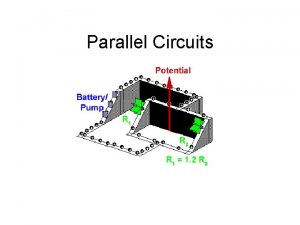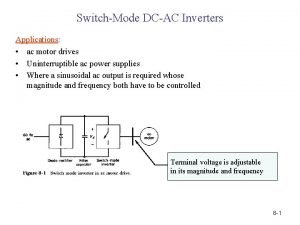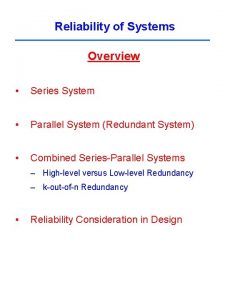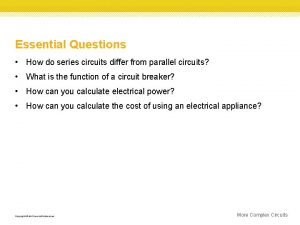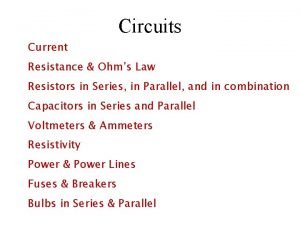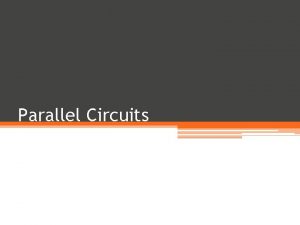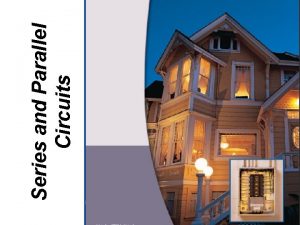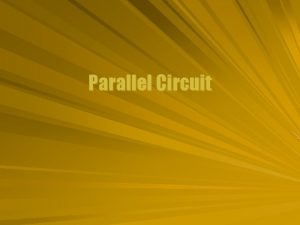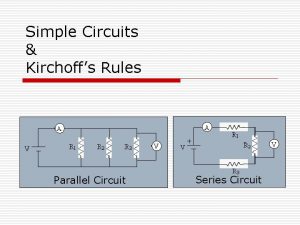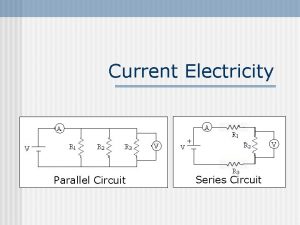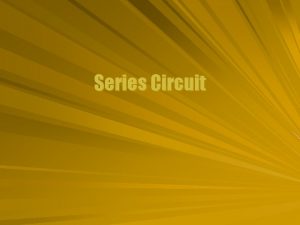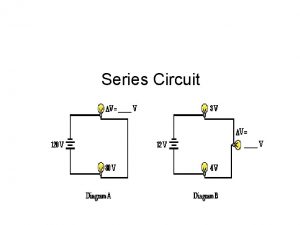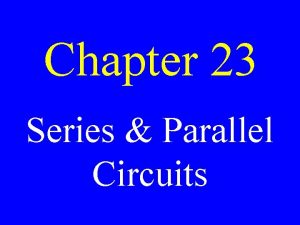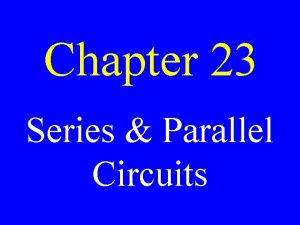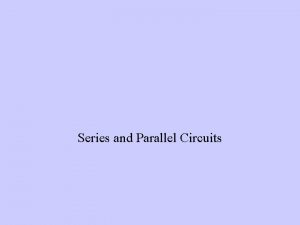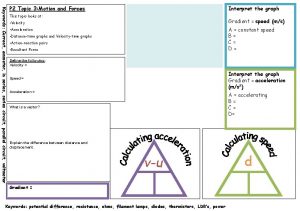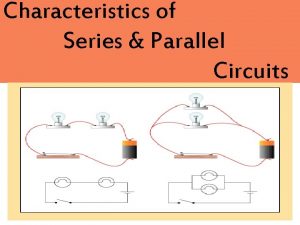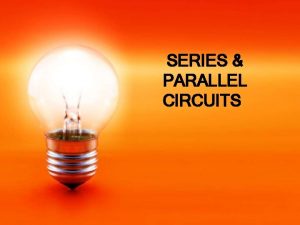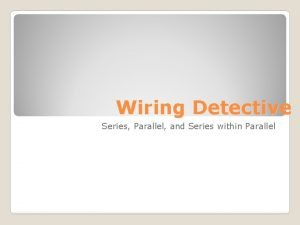Lecture 5 Review Series parallel circuit elements Circuit


























- Slides: 26

Lecture 5 • Review: • Series, parallel circuit elements • Circuit reduction • Related educational modules: –Section 1. 5

Review: series and parallel circuit elements • Elements in series if they have the same current • Elements in parallel have the same voltage

Circuit reduction • Some circuit problems can be simplified by combining elements to reduce the number of elements • Reducing the number of elements reduces the number of unknowns and thus the number of equations which must be written to determine these unknowns

Series circuit elements – example 1 • Apply KCL at any node all elements have the same current • All of the above circuit elements are in series

Series element circuit reduction – example 1 • KVL around the loop: -V 1 + i·R 1 + V 2 + i·R 3 – V 3 + i·R 4 = 0 (-V 1 + V 2– V 3) + i(R 1 + R 2 + R 3 + R 4) = 0

Series circuit reduction • Notes: • Voltage sources in series add directly to form an equivalent voltage source • Resistances in series add directly to form an equivalent resistance

Series circuit reduction – Example 2 • Determine the power delivered by the 20 V source

Voltage Division • Series combination of N resistors:

Voltage Divider Formula • Ratio of VK to the total voltage is the same as the ratio of RK to the total series resistance

Voltage Dividers – special case • Voltage source in series with two resistors:

Voltage division – example 1 • Determine the power dissipated by the 2 resistor

Voltage division – example 2 • Determine the voltage V 1 in the circuit below.

Parallel circuit elements – example 1 • Apply KVL around any loop all elements have the same voltage • All of the above circuit elements are in parallel

Parallel element circuit reduction – example 1 • KCL at upper node:

Parallel circuit reduction • Notes: • Current sources in parallel add directly to form an equivalent current source • Definition: Conductance is the inverse of resistance • Units are siemens or mhos (abbreviated S or • Conductances in parallel add directly to form an equivalent conductance )

• Go back to previous example, look at it in terms of conductances

Parallel element circuit example 1 – revisted

Parallel circuit reduction – Example 2 • Determine the power delivered by the 2 A source

Current Division • Parallel combination of N resistors:

Current Divider Formula • Ratio of i. K to the total current is the same as the ratio of GK to the total parallel conductance

Current Divider – special case • Current source in parallel with two resistors

Current division – example 1 • Determine the current in the 2 resistor

Current division – example 2 • Determine the value of R which makes i = 2 m. A

Circuit Reduction • Series and parallel combinations of circuit elements can be combined into a “equivalent” elements • The resulting simplified circuit can often be analyzed more easily than the original circuit

Circuit Reduction – example 1 • Determine the current in the 2 resistor. (Note: we wrote the governing equations for this example in lecture 3. )

 Parallel vs series circuit
Parallel vs series circuit Type of circuits
Type of circuits Parallel circuit vs series circuit
Parallel circuit vs series circuit Venn diagram of climate and weather
Venn diagram of climate and weather Advantages of parallel circuits over series circuits
Advantages of parallel circuits over series circuits Short circuit examples
Short circuit examples Difference between series and parallel circuits
Difference between series and parallel circuits Parallel circuit examples
Parallel circuit examples Draw a series circuit
Draw a series circuit Circuit construction kit
Circuit construction kit 01:640:244 lecture notes - lecture 15: plat, idah, farad
01:640:244 lecture notes - lecture 15: plat, idah, farad Geology lecture series
Geology lecture series Dcac lecture series
Dcac lecture series Cloud computing lecture
Cloud computing lecture Maclaurin series vs taylor series
Maclaurin series vs taylor series Heisenberg 1925 paper
Heisenberg 1925 paper Taylor series of composite functions
Taylor series of composite functions Maclaurin polynomial
Maclaurin polynomial Ibm p series models
Ibm p series models Series-shunt feedback amplifier examples
Series-shunt feedback amplifier examples Series aiding and series opposing
Series aiding and series opposing Arithmetic series formula
Arithmetic series formula Series vs parallel
Series vs parallel Reliability in series and parallel
Reliability in series and parallel How do series and parallel circuits differ
How do series and parallel circuits differ Resistor in series and parallel
Resistor in series and parallel Series parallel network
Series parallel network







